Food Storage Tips (Make Your Food Last Longer)
Updated by Kathryne Taylor on May 15, 2020
If you’re struggling to find recipes that suit your supplies right now, I’m right there with you. Grocery supplies in Kansas City are wacky this week. I got a good laugh on Monday, when the automated Whole Foods delivery system suggested frozen French fries as a substitute for sun-dried tomatoes.
While we’re all trying to make the most of what we have at home, I thought I’d share my best tips on how to preserve your ingredients. I hope this post offers a few useful tips that you can carry into easier times. Here’s what you’ll find in this post:
- General Food Storage Guidelines
- Greens & Herbs
- Fresh Fruits & Vegetables
- Bread & Baked Goods
- Dairy & Eggs
- Nuts & Whole Grains
Throughout the sections, I’ve tried to offer suggestions throughout for when you have too much or not enough of something.
Lastly, please make use of my ingredient index or the search bar for any ingredient you want to use up, and check recipe comments for substitutions that have worked for other readers! We’re going to make it.
General Food Storage Guidelines
“The rotten apple spoils his companion.” – Benjamin Franklin
Let’s take Ben’s advice quite literally this time. One moldy apple can lead to a bunch of moldy apples, because the mold will spread looking for a new food source.
Here are some general tips:
- Examine your fresh produce often and discard any bits that are turning mushy or showing signs of mold. If there’s a rubber band or twist-tie around your produce, remove it as soon as possible—those parts start going bad first.
- Store your fruits separately from your veggies. Ripe fruits release ethylene gas, which encourages everything nearby to ripen or spoil.
- Store fresh fruit (avocado, pineapple, mango, peaches & all relatives) and avocados that are not yet ripe at room temperature. Once ripe, move them to the fruit drawer to slow their spoilage.
- Pretty much all sturdy fruits and vegetables will keep for at least a few days at room temperature, if need be.
- Square containers are ideal, since they occupy about 25 percent less space than round ones.
- Now might be a fun time to make quick pickles. You can make pickle onions, radishes, carrots, cauliflower, peppers and more!
Lastly, trust your eyes and your nose above all else. Use-by dates are approximates.
Greens & Herbs
Leafy Herbs (Cilantro, Parsley and Dill) and Green Onion
To keep your store-bought cilantro, parsley and green onion fresh for up to three weeks, remove the rubber band around the base ASAP. Store them in mason jars filled with a few inches of water.
Treat them like a bouquet of flowers—occasionally trim the ends of the herbs (not green onions), replace the water, and remove any decaying pieces as you see them. The herbs will keep best in the door of the refrigerator with a produce bag over the top, but they also keep pretty well at room temperature, out of direct sunlight.
Out of fresh herbs? For recipes that call for a small amount of fresh herbs as an accent or garnish (say, less than 1/2 cup), you have a few options. You can simply omit them, or substitute dried herbs, or sometimes, you can substitute one herb for another (cilantro and parsley are occasionally interchangeable, but cilantro would likely taste out of place in an Italian dish).
When substituting dried herbs for fresh, use one-third of the amount specified (so if a recipe calls for one tablespoon—which is three teaspoons—fresh dill, use one teaspoon dried dill). You can always add more if desired.
Packaged Fresh Greens
Once opened, place a paper towel inside the bag or lid before resealing. The paper towel absorbs excess moisture and keeps your greens fresh longer. If your greens came in a clamshell, securely fasten the lid and store the greens with the lid side down.
Sturdy Greens: Chard, Collard Greens and Kale
These greens will actually keep at room temperature for up to a few days, but will keep longer in the refrigerator. Remove the rubber band at the base before storing in the bag.
Use the whole stem: If you don’t mind extra texture in meals that feature cooked greens, slice the stems of sturdy greens into small (1/4-inch wide) pieces. Cook the stems for a few minutes, until easily pierced through by a fork, before adding the greens.
Extra greens? Use this quick-cooking technique and serve them as a side dish. Or make kale salad or lentil soup!
Dehydrated greens? You can often resuscitate limp greens and leafy herbs in an ice water bath.
Fruits & Vegetables
Apples
Apples will keep for a week at room temperature, or several weeks in the fruit drawer.
Extra apples? Make applesauce, apple steel-cut oatmeal, or find more apple recipe here.
Asparagus
Store asparagus in a mason jar or similar, with a couple of inches of water inside. Cover the top with a produce bag, if you have it, and store in the door of the refrigerator if possible.
Extra asparagus? Roast it.
Avocado
Store underripe avocado at room temperature until sufficiently ripened. To speed up this process, place it in a paper bag with an apple or banana (they contain ethylene gas, which will encourage ripening).
Once the avocados are ripe (they yield slightly to a gentle squeeze), store them in the refrigerator to slow excess ripening.
Once cut open, the best way to prevent avocado from turning brown is to store it in a small container with a chunk of cut onion. The compounds in the onion help reduce browning, believe it or not!
Extra avocado? Make avocado toast, guacamole or creamy avocado dip. Find more avocado recipes here.
Out of avocado? If a recipe calls for avocado as a garnish, omit it or add something creamy instead—perhaps a dollop of sour cream will do.
Bananas
Store underripe bananas at room temperature until sufficiently ripened.
Or, freeze ripe bananas for future creamy smoothies. Peel them and slice them into 1-inch segments. For best results, freeze them on a rimmed baking sheet before transferring to a freezer bag (otherwise they’ll stick together, but I always mange to pry them apart).
Overripe bananas? You’re in luck—they’re perfect for sweet treats, like banana bread or banana pancakes. Find more banana recipes here.
Beets, Carrots and Radishes
If they came home with nice greens attached, remove the greens and cook them up in some olive oil ASAP. The greens decay far faster than the attached vegetables.
Remove any rubber bands and store these veggies (without the greens) in the vegetable drawer of your refrigerator. Or, they’ll keep for a few days at room temperature if you’re limited on storage.
Extra carrots? Make creamy roasted carrot soup, French carrot salad, carrot ginger dressing, or perfect roasted carrots. Find more carrot recipes here.
Extra radishes? Pickle them or make lentil-chickpea salad.
Berries and Cherries
Berries are delicate. They will last for a couple of days at room temperature, but the refrigerator’s fruit drawer is best (store them on top of everything else so they don’t get smushed). Be sure to remove any berries that are going bad. Rinse berries on an as-needed basis; storing them with water droplets on them will encourage decay.
Extra berries? Eat up! You could try this vinegar-wash solution to prolong their life. Or, wash, air dry completely and freeze for later. Use the search bar to find a variety of recipes that call for berries and cherries.
Celery
Celery is best stored in the bag it came in, with a couple of small air holes, in the refrigerator’s vegetable drawer. (Remove any rubber bands around the celery before storing.) If it goes limp, cut it into a few sections and soak it in some ice water to try to revive it.
Extra celery? Chop and freeze for future cooking, or make crisp celery salad or this celery and olive appetizer. Find more celery recipes here (many are soups).
Out of celery? If you’re making a soup that calls for a bunch of ingredients, you can likely omit it.
Citrus
Citrus keeps well at room temperature for up to a week, or two to three weeks in the refrigerator’s fruit drawer. Be sure to remove any citrus that is squishy or moldy before it contaminates the others.
Extra citrus? Make mimosas with fresh-squeezed orange juice, margaritas or cilantro-lime rice with lime, or classic hot toddies or hummus with lemon.
Out of citrus? For recipes that call for fresh citrus juice as a bright accent, you can likely substitute vinegar. Try a mild vinegar, perhaps rice vinegar or apple cider vinegar. Start with less vinegar than citrus, and add more to taste.
Garlic and Onions
Garlic and onion should be stored in a cool, dark place with good ventilation—not in the refrigerator, not in a plastic bag. They can last for about a month under ideal conditions. Do not store them in the same bin with potatoes, since potatoes release moisture.
I rarely use only a portion of an onion, since onions lose their flavor quickly once they’ve been cut into. You can wrap a portion of cut onion tightly in plastic wrap and store it in the fridge. Use it within a few days.
Extra garlic? Roast it and smear it onto bread, or even make roasted garlic bread.
Extra onions? Quick-pickled onions are especially good with red onions, or make mujadara (lentils and rice with caramelized onions).
Ginger
Store ginger in the refrigerator’s vegetable drawer. It will keep for a week or two.
Extra ginger? You can freeze it and grate it on a microplane later (even when it’s frozen). Or make ginger tea, ginger vinaigrette or carrot ginger salad dressing.
Out of ginger? You might try powdered ginger from your spice drawer instead. This will work better in cooked recipes than in raw recipes that are highly ginger-dependent. Try using one-third of the amount of powdered ginger as fresh (so use one teaspoon powdered ginger if the recipe calls for one tablespoon—three teaspoons—of fresh ginger).
Peppers
Fresh peppers will keep for several days at room temperature, but last a week or longer in the refrigerator’s vegetable drawer.
Extra bell peppers? Make pickled peppers using what you have, or chop/slice them and freeze for later cooking. You could also make vegetable paella or lentil and couscous stuffed peppers, which otherwise call for pantry ingredients. Find more bell pepper recipes here.
Out of bell peppers? If you have jarred roasted bell peppers, they’re a great substitute. Otherwise, just increase the amount of other veggies called for in the recipe, or add something else, like carrots.
Extra jalapeños? Make fresh jalapeño relish, shatta or quick-pickled peppers. Find more jalapeño recipes here.
Out of fresh jalapeños? Try pickled jalapeños, or add a spicy kick with red pepper flakes or a few dashes of hot sauce.
Potatoes and Sweet Potatoes
Store potatoes and sweet potatoes in a dark, cool place with good ventilation—not in the refrigerator, not in a plastic bag. Treat them gently, as they can bruise.
Extra potatoes? Make crispy potato wedges, hash browns, or find more potato recipes here.
Extra sweet potatoes? Make baked sweet potato fries, perfect roasted sweet potatoes, savory mashed sweet potatoes, or find more sweet potato recipes here.
Tomatoes
I always believed that tomatoes should never be refrigerated (lest they turn bland and mealy). Serious Eats’ extensive testing has proved me wrong. In summary:
- If you have slightly underripe tomatoes from the farmers’ market or your garden that you want to eat over the course of a few days—store them at room temperature.
- Otherwise, store them in the refrigerator and let them come back to room temperature before serving.
Serious Eats suggests storing all tomatoes vine-side down on a plate to prevent them from becoming soft and wrinkled. I’m eager to try it!
Extra tomatoes? Make pico de gallo. Find more tomato recipes here.
Dairy & Eggs
Milk and Cream
Store it in the fridge, of course, unless you bought a shelf-stable option (refrigerate after opening). Always give your milk a whiff before using—if it smells off, it’s gone bad.
Out of milk? Try a homemade alternative: cashew milk, oat milk, or pecan milk. If a baked good recipe calls for a small amount of milk, you could likely substitute water instead.
Yogurt, Sour Cream, Cream Cheese and Soft Cheeses
Store in the refrigerator. I try to keep my cheese and small containers of dairy products in the cheese drawer, so I can find them more easily. Wrap partially used logs of goat cheese securely in plastic wrap.
Use your eyes and nose to determine if they are still fresh. I often see pink mold as the first sign of decay on these products, or smell something funny. Toss these items—the mold is likely growing under the surface, and they are not safe to eat.
Out of the creamy stuff? If you have cashews, try my vegan sour cream—it’s a great substitute for sour cream, goat cheese, ricotta, and even mozzarella.
Hard Cheeses
Store in the refrigerator. Cheese experts will tell you to wrap open cheese in wax paper; I place them in resealable plastic or silicone bags. They’ll dry out if left exposed.
If you find a moldy spot, slice off at least 1 inch around and below the moldy spot, being sure not to contaminate your knife the in the process.
Out of Parmesan? If you have hemp seeds and nutritional yeast, make my vegan Parmesan.
Eggs
Store eggs in their original cartons inside the fridge—not in the refrigerator door. Wondering if your eggs are still fresh? Fill a bowl with cold water and place your eggs (a couple at a time). If they sink and lay flat on their sides (very fresh) or stand on one end at the bottom of the bowl (less fresh), they’re fine. If they float to the top, they’ve gone bad.
Extra eggs? Make a frittata, fry an egg to use as a protein-rich meal topper, or find more egg recipes here.
Out of eggs? For baked goods, you can often substitute “flax eggs” or “chia eggs” in their place. Learn more here.
Bread & Baked Goods
Store your bread products (including tortillas and pita breads) in the refrigerator or better yet, the freezer, to prevent the growth of mold. While it’s true that bread goes stale in the fridge, it’s fine once you toast or warm it (by “stale” I mean that the bread has stiffened up/dried out).
If you see any mold (fuzzy bits), the whole loaf/bag is likely contaminated. Do not eat it.
Nuts, Seeds, Whole Grains & Flours
Nuts and Seeds
First, I always recommend buying raw (not toasted) nuts. They last a lot longer, and freshly toasted nuts taste amazing. Store them in air-tight bags or containers in a cool, dark place (the refrigerator or freezer is even better if you have the space). While nuts sure look nice in mason jars and sturdy containers, those containers take up more space than bags with the air squeezed out of them.
Taste test your nuts and seeds before using. If they taste bitter, they have gone bad (rancid).
Extra nuts? Make granola or almond butter (you can add pecans, walnuts or cashews if you’d like).
Nut Butters and Tahini
Once opened, these are best stored in the refrigerator. If they taste bitter or show signs of mold, they have gone bad and are not safe to eat.
Whole Grains and Whole Grain Flours
Store these in a cool, dark place in air-tight, sealed bags or containers. They will last even longer in the refrigerator or freezer, if you have the space. Whole grains/flours do not last as long as more refined options, since they still contain some good-for-you oils.
Give your whole grains and whole grain flours a whiff before using. If they smell rancid, they’re spoiled.
More resources you might appreciate: DIY Pantry Staples, Pantry-Friendly Recipes & Substitutions That Work, and my printable pantry shopping list, which you can use to keep track of what you have. You might also like my monthly seasonal produce guides and essential kitchen tools.

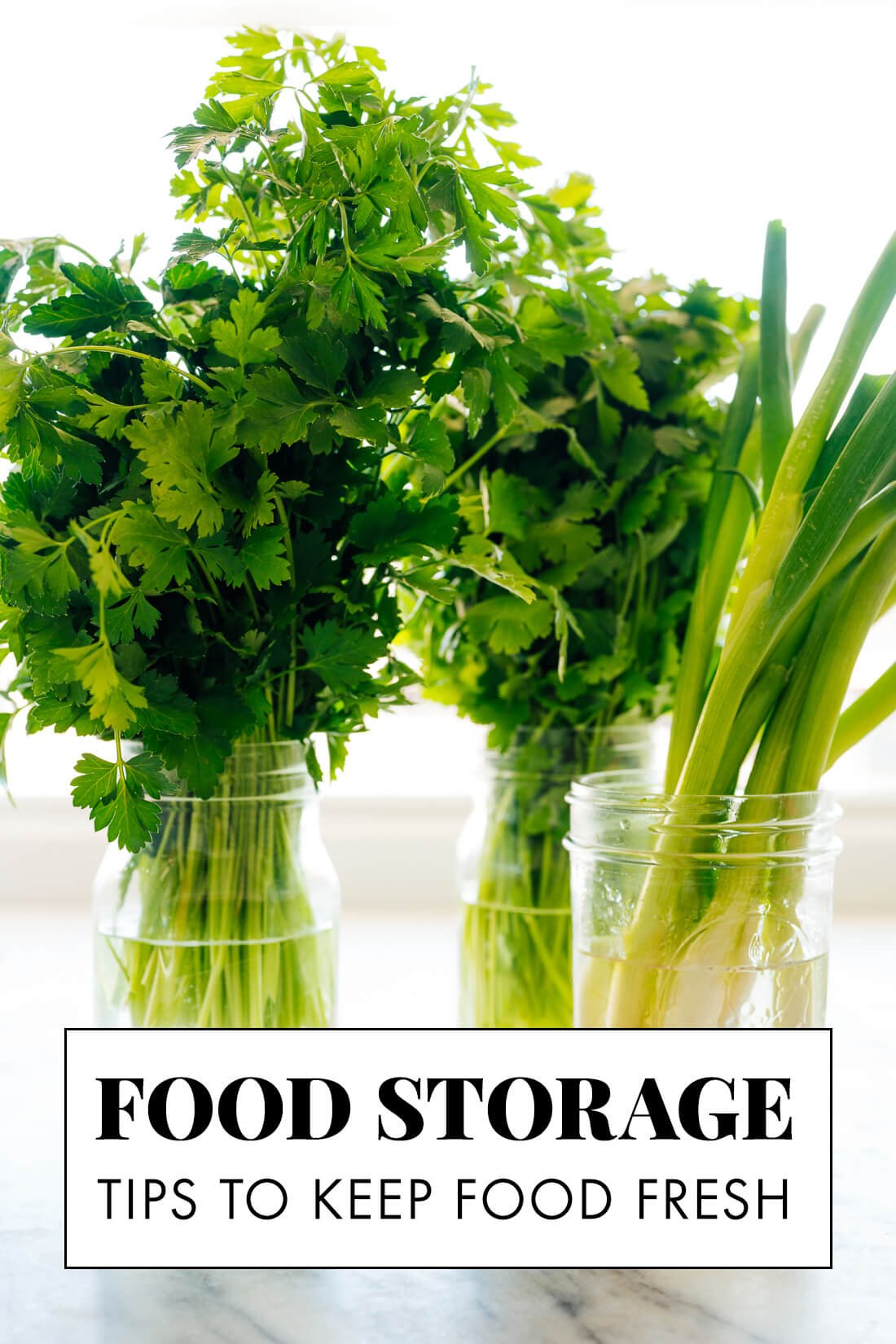

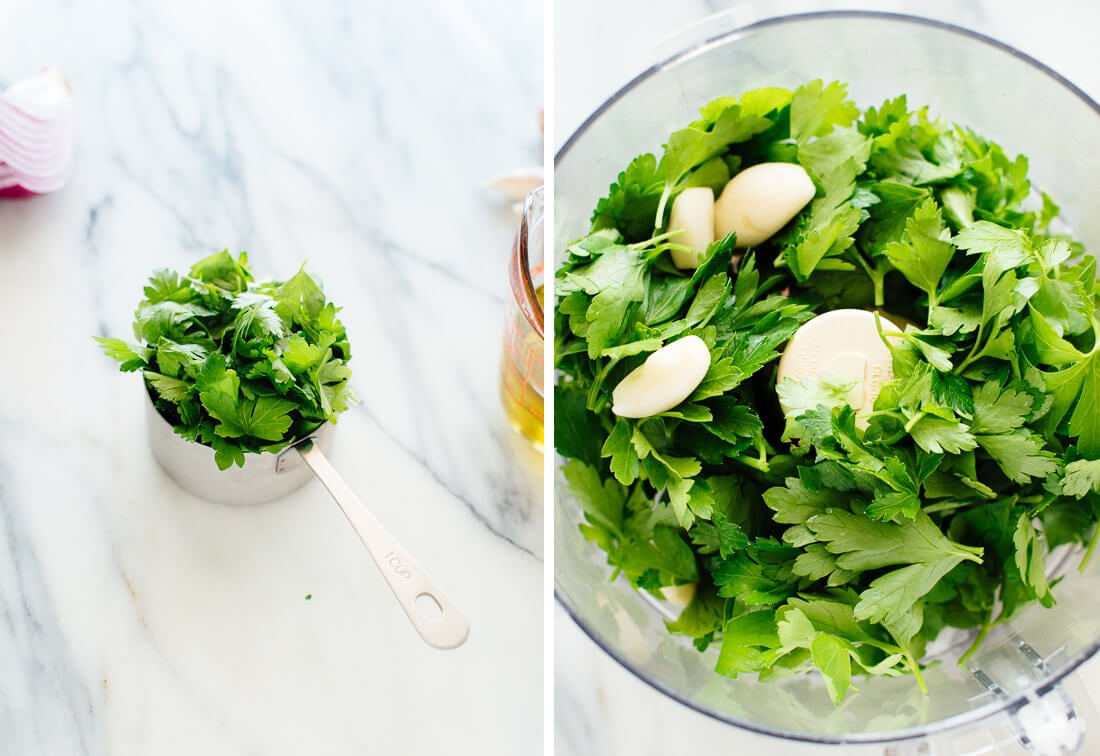
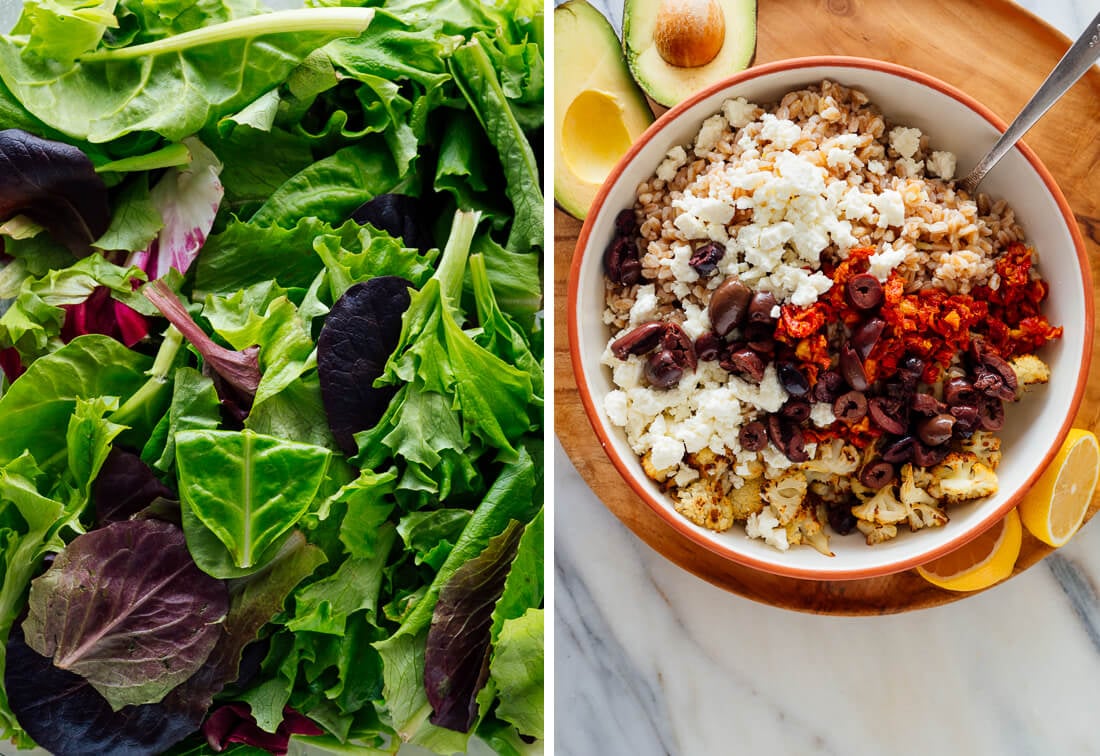
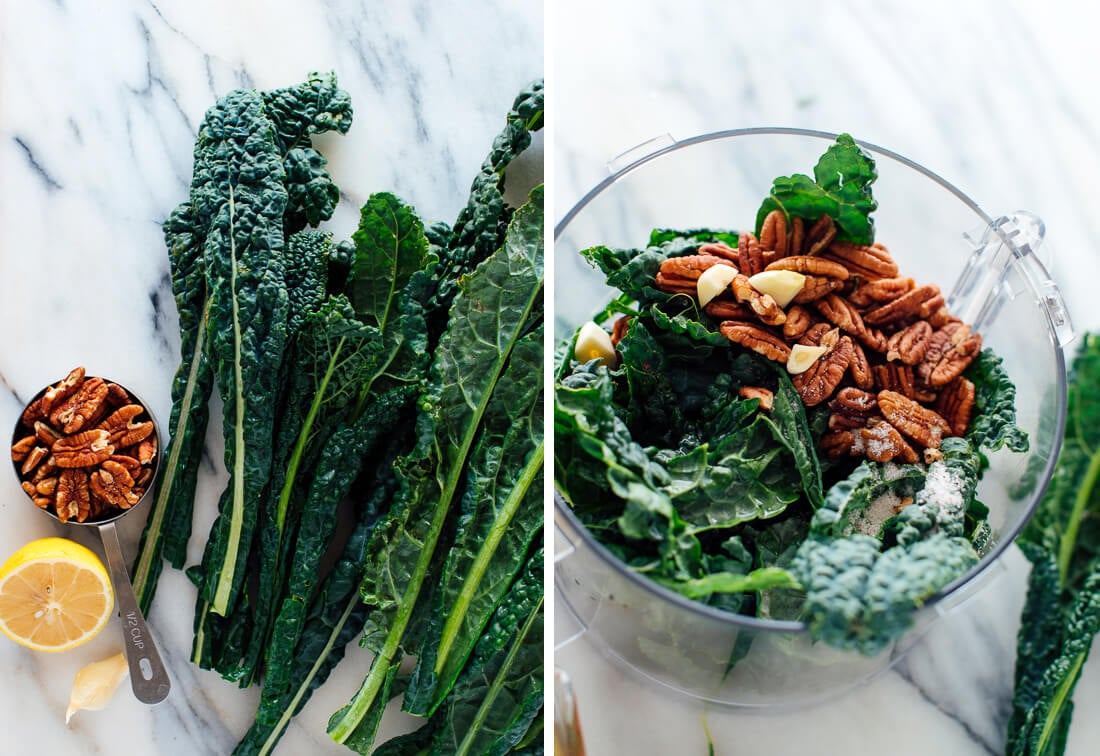


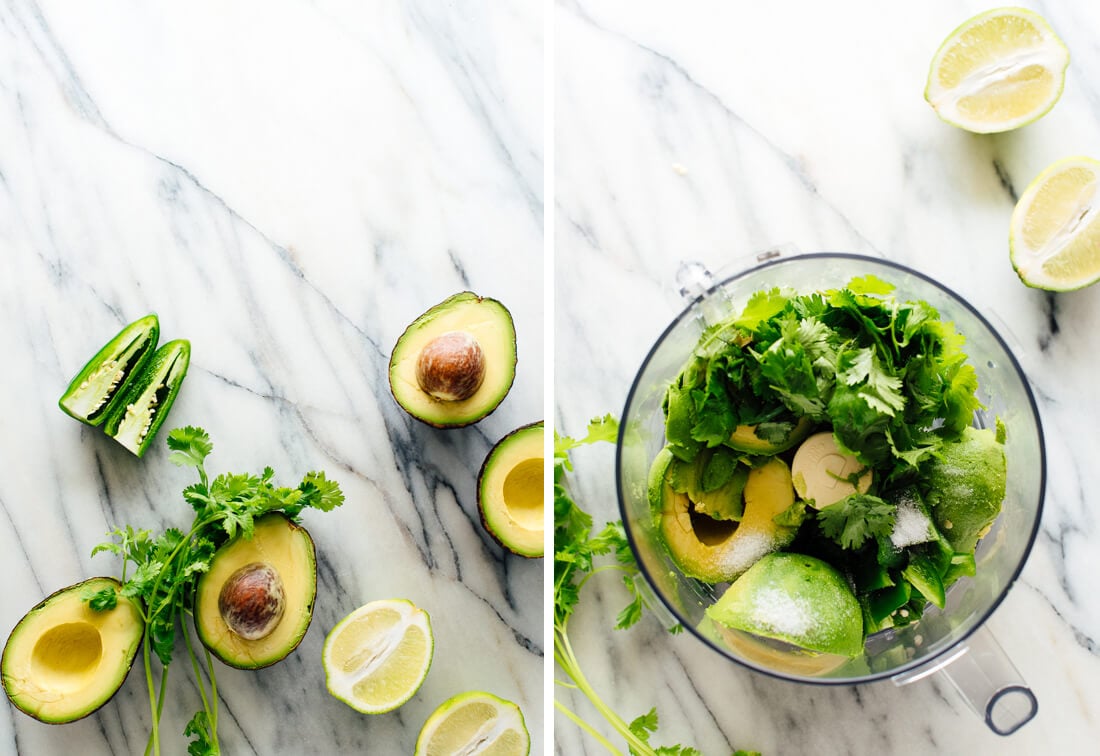
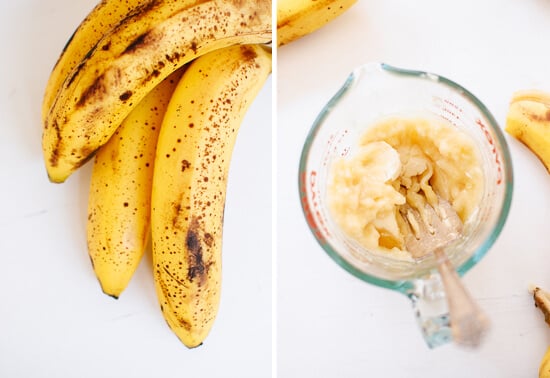




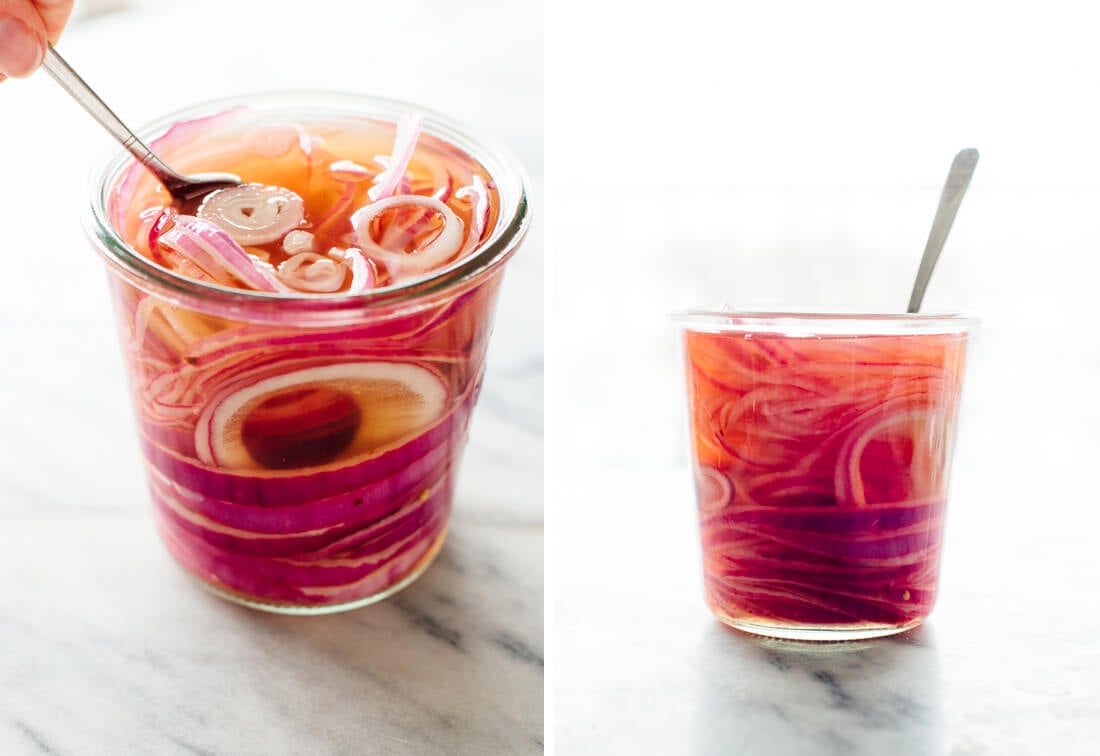
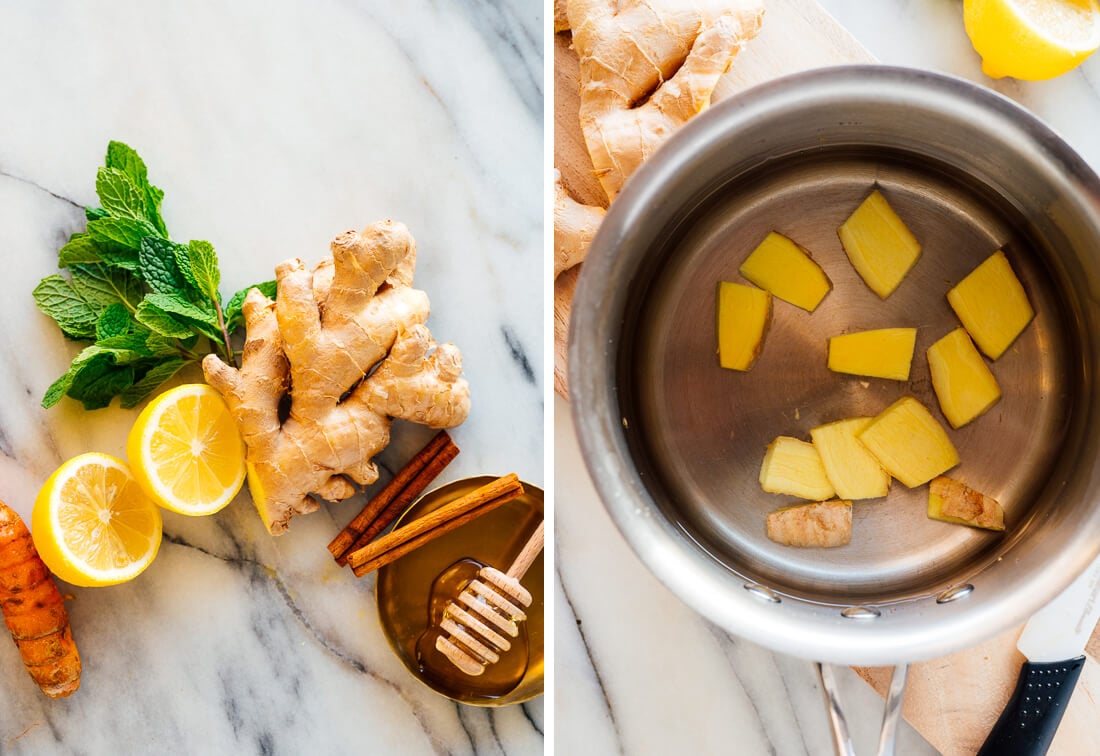
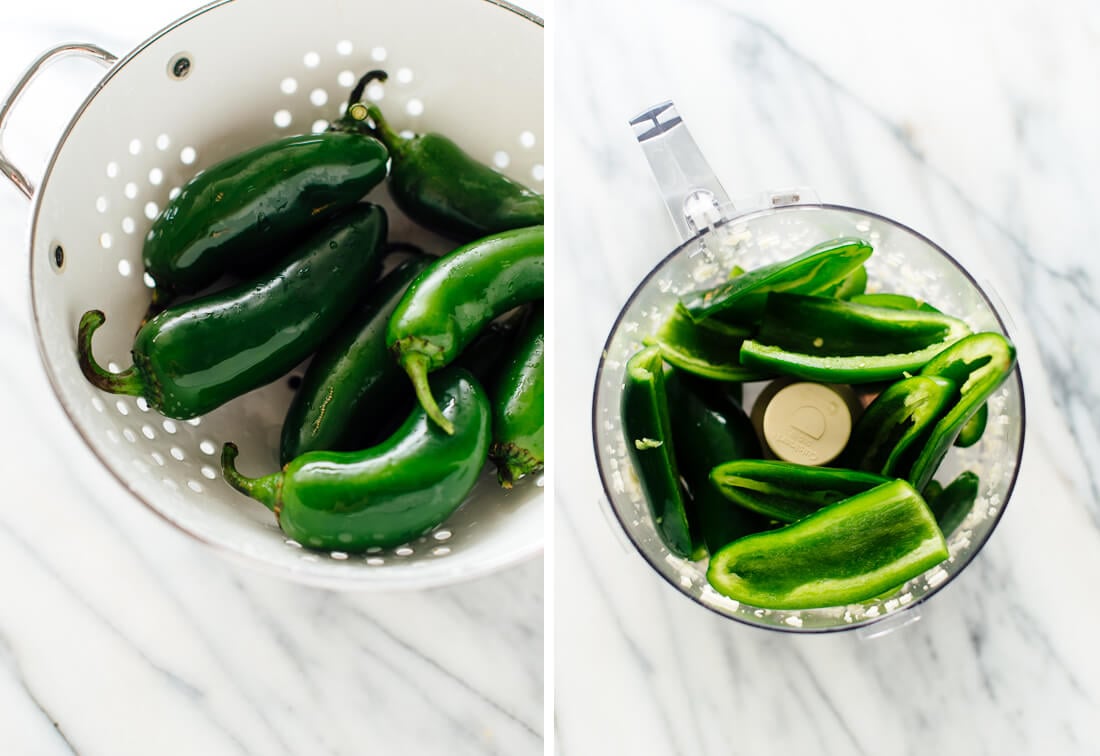

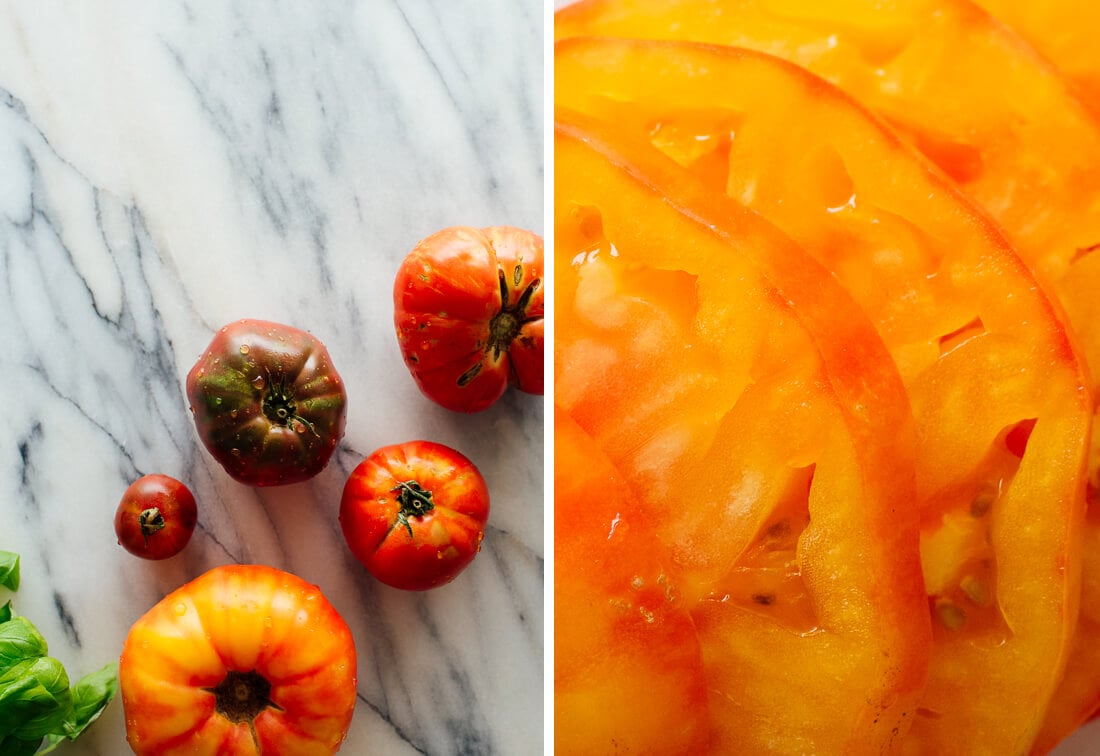
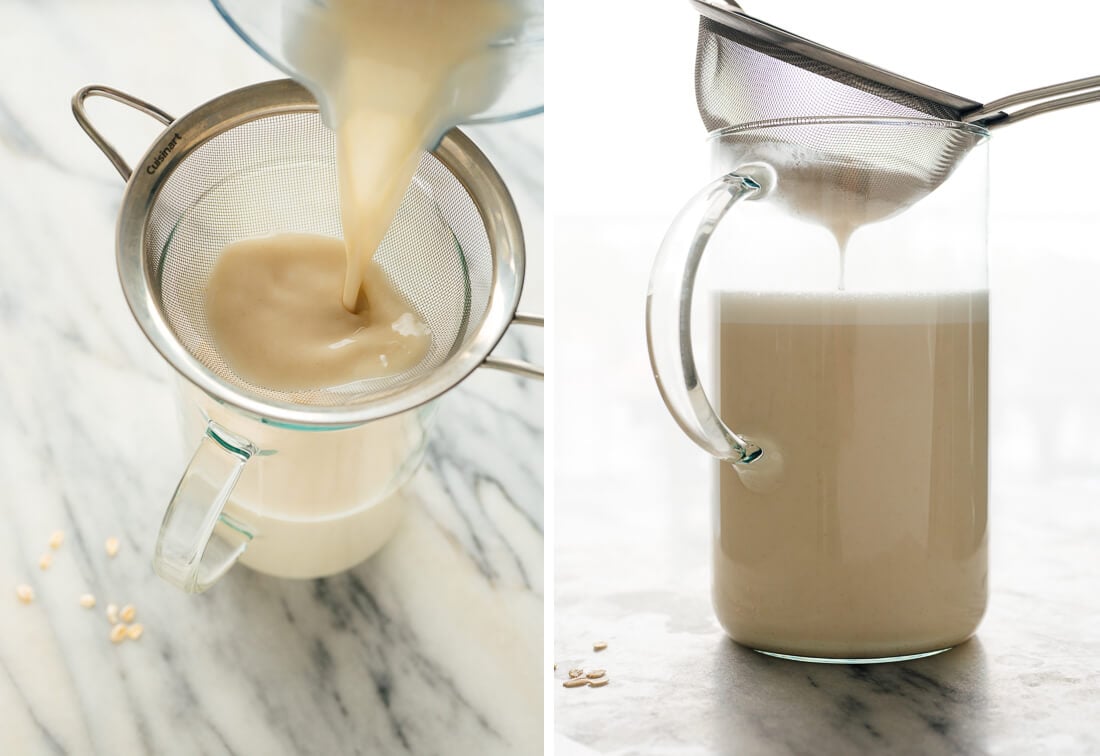
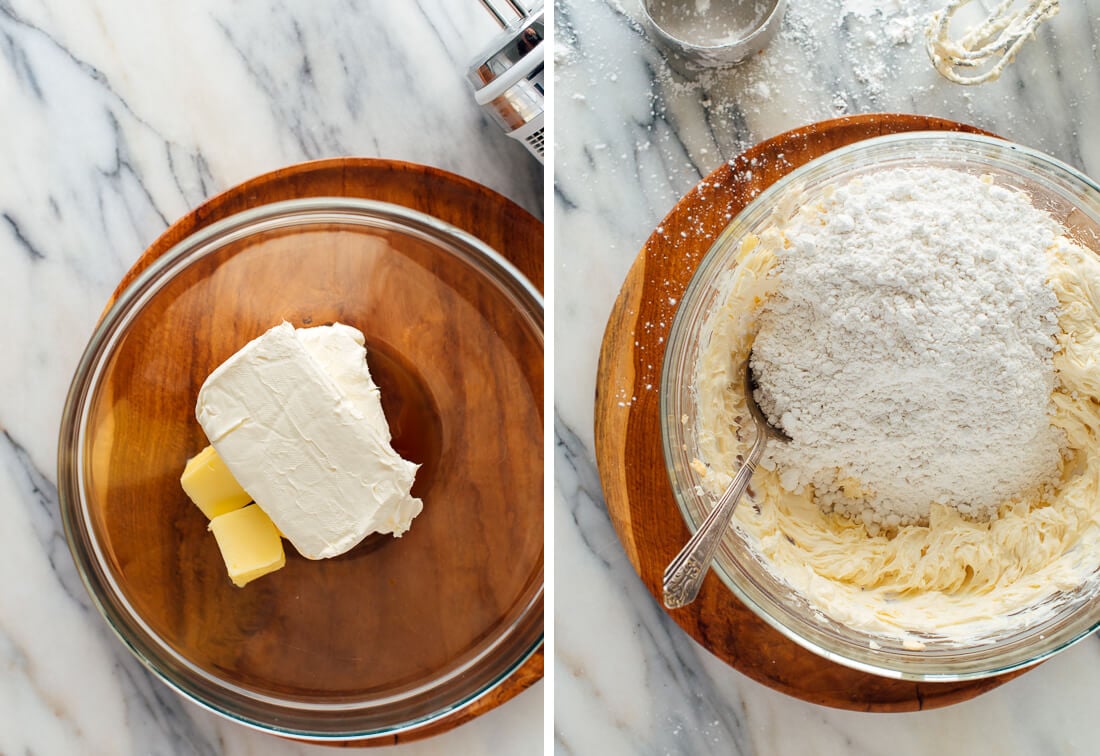
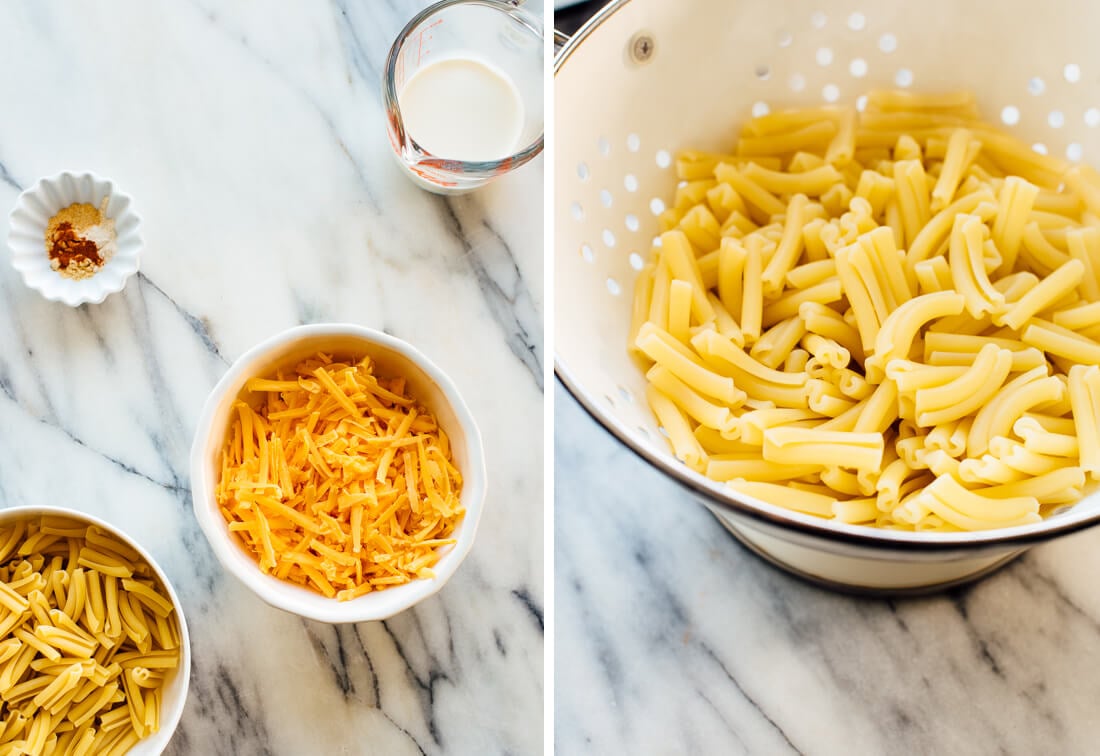
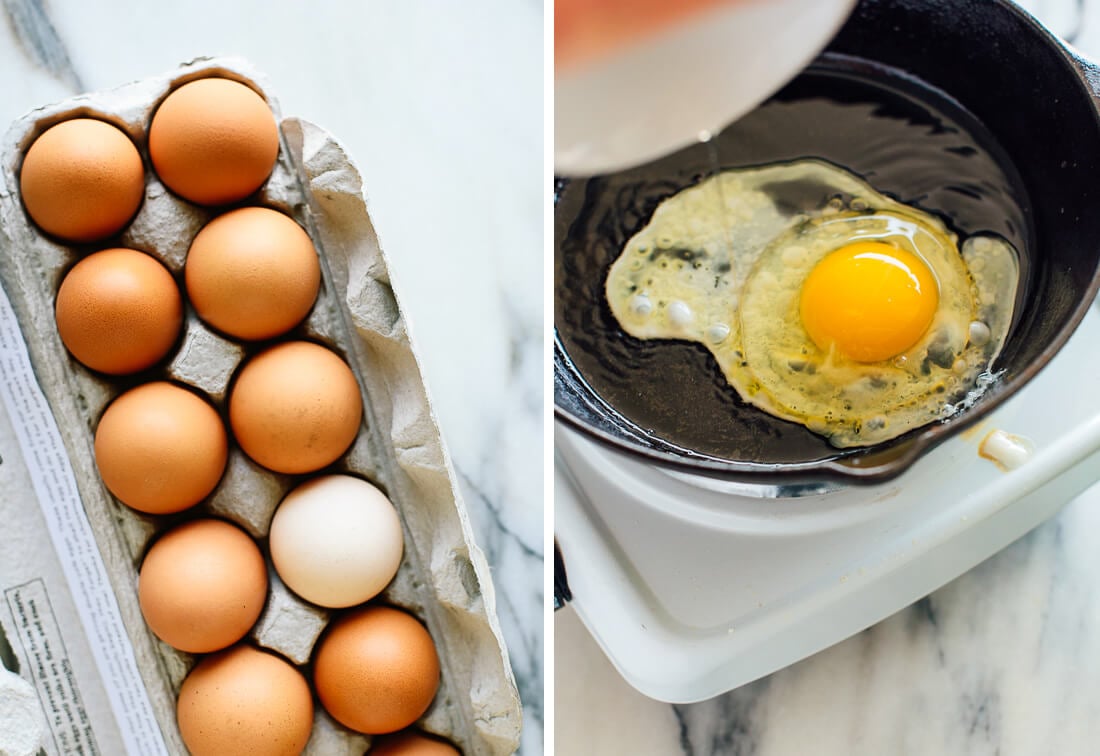

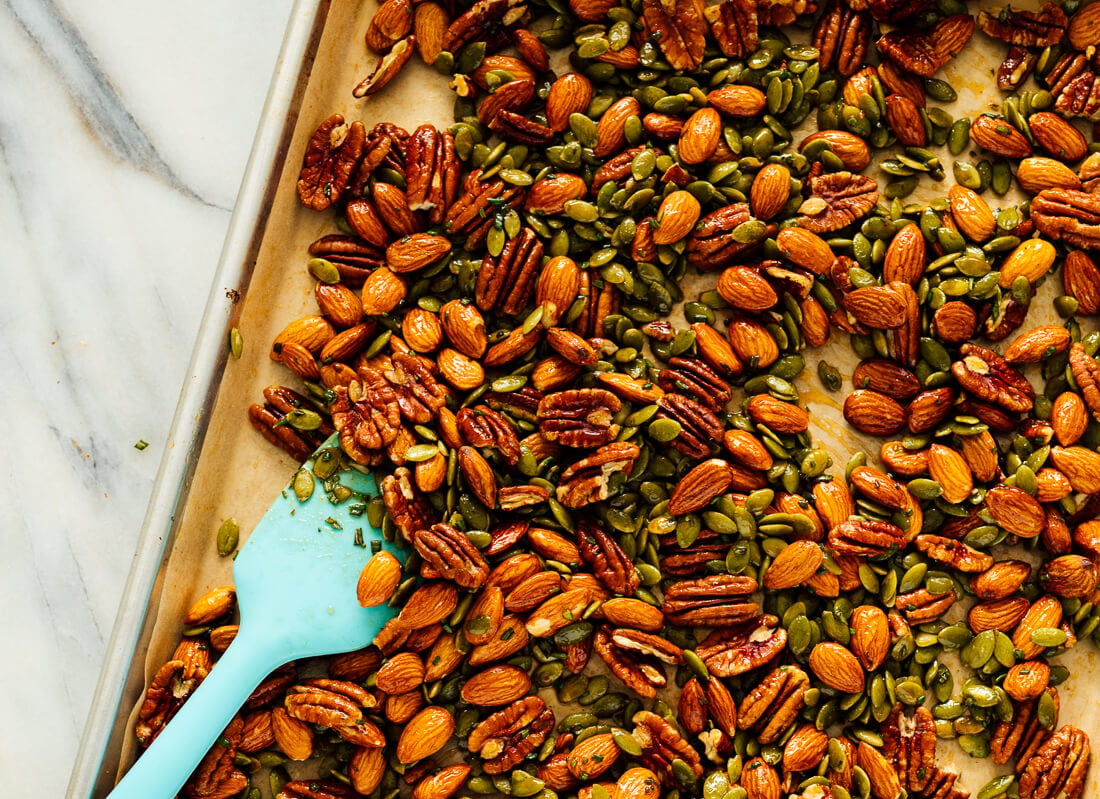














A friend of mine discovered that you can freeze an avocado once it is at the somewhat ripened stage. (soft, but not too soft) When you need one, simply put in the microwave for approx. 1 minute, give or take, depending on size. It really works!
Thank you for sharing, Kirsten!
These food storage guidelines are so valuable, you really ought to turn them into an E-book for your readers. It’s the kind of information one wants to have in an easy, concise format to access, print out and keep.
Thank you for your suggestion, Robin!
I LOVE all these tips so much, Kate! Half of them I’ve not heard of before, but they actually make a lot of sense. Cheers, I’m going to put my asparagus in a small jar of water now.
I’m happy to hear that, Hayley! I hope it comes in handy for you.
Why remove the rubber bands?
To give the produce room so it doesn’t go bad as quickly. I hope this helps!
It help to have some air circulating between the stalks, this reduces the risk of mould and decay where the stalks would otherwise be touching.
Yes, exactly Linda! :)
This is very comprehensive and so helpful…Thank YOU!!
You’re welcome, Linda!
Thank you sooooo much!!!!!
You’re welcome, Suzanne!
Thanks, Kate! We’re in total lockdown for a month in New Zealand and supermarket deliveries are scarce, so I’m relying on fruit and vege delivery box services. I normally shop to a meal plan and end up with an empty fridge at the end of the week, so trying to balance the unpredictable contents of vege delivery boxes (THREE eggplants this week!) is challenging and I’m relying heavily on your recipe book and website. Roasted eggplant lasagne for dinner tonight, baba ghanoush for lunch tomorrow… Stay safe!
I’m glad this is helpful and you are able to find delicious recipes to use for your shipments!
Very much appreciated! And delighted to see darling Cookie in a photo xoxo
Thank you!
Do you know how long it is safe to keep opened mayonnaise in the fridge? I buy the one in the squeeze bottle (so there’s no contamination) and I’ve contacted the mfr (President’s Choice) but they couldn’t give me any guideline. Love the list you’ve posted here, I’m keeping it, thanks!
Hi Lynne, It should give you an expiration date on the bottle. I would go by that. Of course, give it a smell before using it if it’s been in there awhile. :)
I thought once it’s opened the “best before” date on the bottle didn’t apply. I always replace it 2 months after opening, but now I’m in isolation. I opened it at the end of February but the best before date on the bottle is May 2020.
Hi Lynne,
I would be guided by the use by date even if you opened it in Feb, the commercial Mayo has a long life and even the May date is probably conservative. As Kate recommends give it a sniff test or even a taste test first if in doubt.
Keep safe, blessings from Australia.
Hi Linda! Thanks for commenting – fun to hear your opinion from so far away! I’m on the West Coast of Canada. Being able to exchange ideas & talk with people all round the world instantly is something I’ll never be able to take for granted :) I’m glad to have your opinion as well as Kate’s initial comment and I’ll take the advice, grateful for the peace of mind. Thanks for your kind wishes, blessings back to you, and you stay safe too.
What great tips. Thank you ladies. I am putting all these great ideas in a folder. Never thought of many of them
You’re welcome, Solveig!
Thank you for these great tips Kate! They are much needed when you try to limit your trips to the grocery store…
For the storage of celery, my dad found a couple years ago a great tip that will keep it crunchy for a couple of weeks (no joke). As soon as you bring it home, wrap it in aluminium foil and then store in the veggie drawer of your fridge. I try to handle the aluminium foil gently so I can reuse it a couple of times with new celery :)
You’re welcome! Aluminum foil sounds interesting.
Perfect timing with this very well-organized info. Thank you for taking the time to put this together and share. I especially appreciate the tips on what to do if you have too much or none of a particular ingredient. I scored a large ginger root at the grocery last week, grated and froze it, and now I have a small supply at the ready. That is a great tip.
You’re welcome! I’m really happy to hear it’s going to be useful for you.
These are helpful tips—thanks! Also, for those near a Trader Joe’s, frozen grated ginger is sold in packaged little cubes, always at the ready. Of course, it works to grate your own and freeze in ice cube trays, too.
Thank you so much for providing such a comprehensive guide! This is awesome :) What a neat tip about the square containers! Hope you’re faring well despite the state of things!
You’re welcome, Arianna! I’m happy you find it so helpful.
Just because an egg floats it DOES NOT mean it is bad -just older and the air sack inside the egg has expanded. If you want to know if an egg has gone bad crack it open and smell it. Maybe you should do your homework before you tell people wives tales
Hi Joyce, Thank you for your feedback. Based on my experience and research, this is accurate to my current knowledge.
Since you won’t post my reply- anyone can google the Correct info on eggs
Hi Lynne,
I would be guided by the use by date even if you opened it in Feb, the commercial Mayo has a long life and even the May date is probably conservative. As Kate recommends give it a sniff test or even a taste test first if in doubt.
Keep safe, blessings from Australia.
Great post Kate! Lots of useful info.
Thank you, Sue!
Awesome information! Thnx so much.
Amazing resource — I’ve been doing the trick you mentioned for cilantro for a few years now and what a game-changer it is. Glad to have all the other tips as well and looking forward to making use of flax eggs!
Hooray! I’m really glad it’s working for you.
You made MY day! Thank you so much for these wonderful suggestions. Life is so fragile right now; having someone helping us get through each day with ways to keep our treasured groceries fresh is HUGE.
Thank you so much for this information, Kate.
And for all the recipes.
My nuts and seeds are going to the fridge.
No more rubber bands.
You’re welcome, Michael!
This is so useful!
Thank you so much for posting this information!
I learned a bunch of great tips!
Carole
Hi, Thanks for the tips! Do you know what the dish is featured with the cauliflower and roasted tomatoes? I tried to search under Mediterranean and Greek but no dice.
Hi, Here it is! https://cookieandkate.com/roasted-cauliflower-and-farro-salad-with-feta-and-avocado/
These suggestions were SO helpful, thank you!!!
Great suggestions! Thank you for sharing
You’re welcome, Martha!
Wow, awesome tips and what a resource to have on hand. Thanks so much for the time you put into it for all of us! Love your site and recipes.
Thanks a lot, Kate ! This is really helpful these days.
Thanks so much for this informative and extensive guide! Super useful. As far as storage of nuts, whole grains, and flours, do you recommend a particular air-tight container?
Hi Michelle! Glass work really well. A large mason jar is a great option.
When storing ginger in the fridge, do keep it in a plastic bag to increase longevity?
Also, what about baking powder and baking soda? Do you freeze them? Place in a mason or hermetic jar?
I have loved all your recipes so far! Thank you for sharing!
Hi Heather! Ginger does best in the vegetable drawer. I haven’t been able to tell a big difference between ginger stored in a bag vs. not. If you’re out of room in the vegetable drawer, I’d definitely store it in a bag to help prevent dehydration. I always keep my baking powder/soda in a drawer at room temp. They typically don’t expire for a couple of years, and I always use them up in that time. I like buying them in the cylindrical containers with a tight-fitting lid (or I transfer to those jars, if I buy it in a different container). Mason jars or any other small, airtight container would work well! Hope this helps.
Another amazing article! After eliminating meat and poultry from my diet last July, you have become my go-to online foodie expert.
Lovely tips, really appreciate it. Thanks
Kate
I just subscribed. Loved reading everything. I am not vegetarian, but low meat eater, so your recepies really are perfect. Your ingrediants are already in my kitchen and maybe now I can up the taste factor with your help.
I like your added life comments and personalization.
Putting yourself out there is very vulnerable and some people can be insensitive. KEEP DOING WHAT YOU ARE DOING. I look forward to getting in the kitchen today to try something out.
Great resource! Do you have any storage tips for prepackaged mushrooms, particularly if you bought several containers but don’t plan to use until later in the week? Thank you!
Hi Lisa! Mushrooms can be tricky. Make sure they stay dry. You can place them unwashed in a brown paper bag in the main section of your refrigerator. This has worked well for me, but they still don’t have a great shelf life. Hope this helps!
Thank you!
Hi Kate, Is there a way to share your blog on my facebook private page? I’d like my followers to have a recipe once a week. Thank you, Lesslee
Hi Lesslee, You can always share a recipe link. My sharing policy provides more detail of my copyright.
Oh My God!!! This is a great blog, I am happy that I have come across this one. It’s an amazing blog to read, so many things about food storage tips. Thanks for this wonderful content.